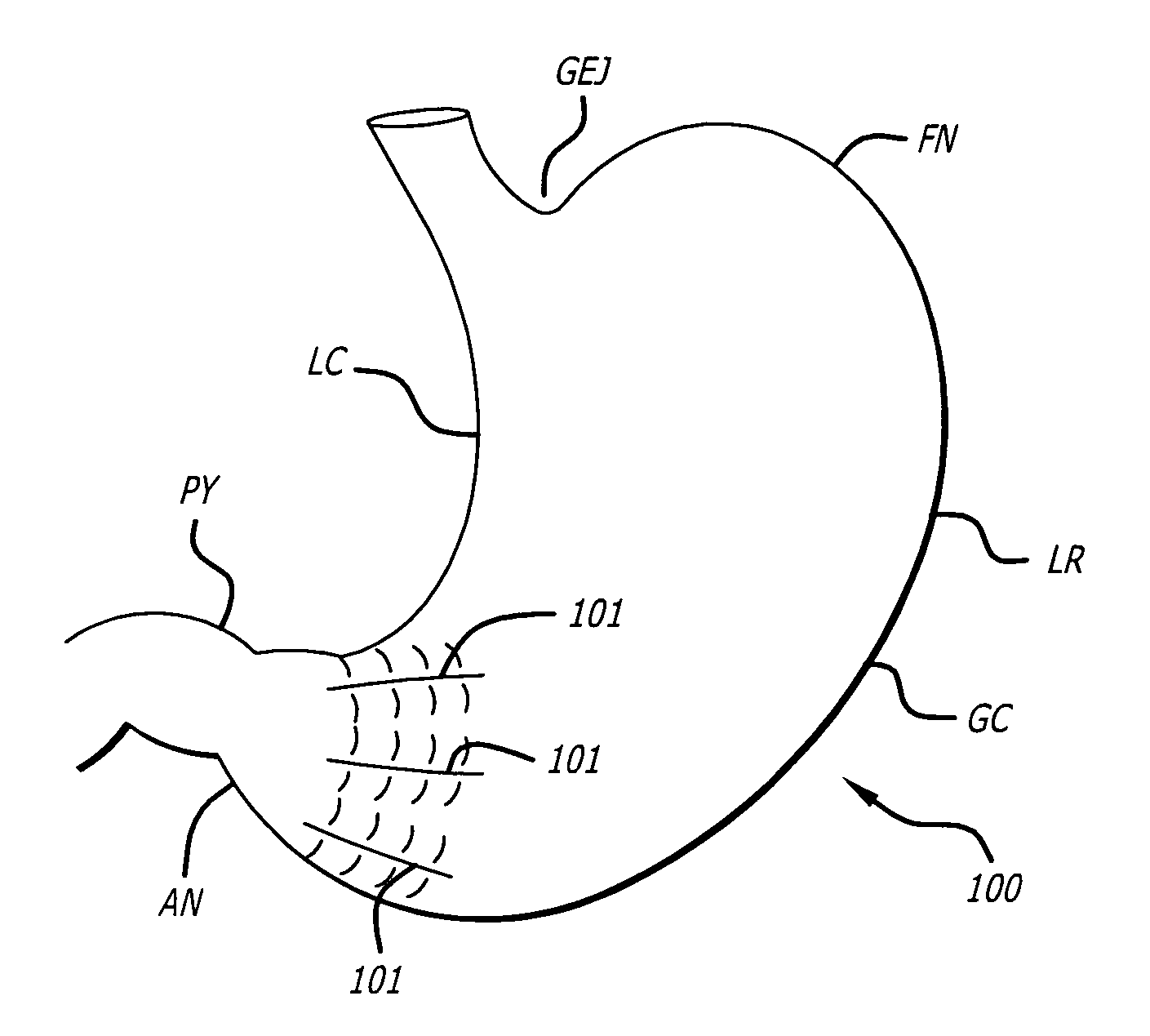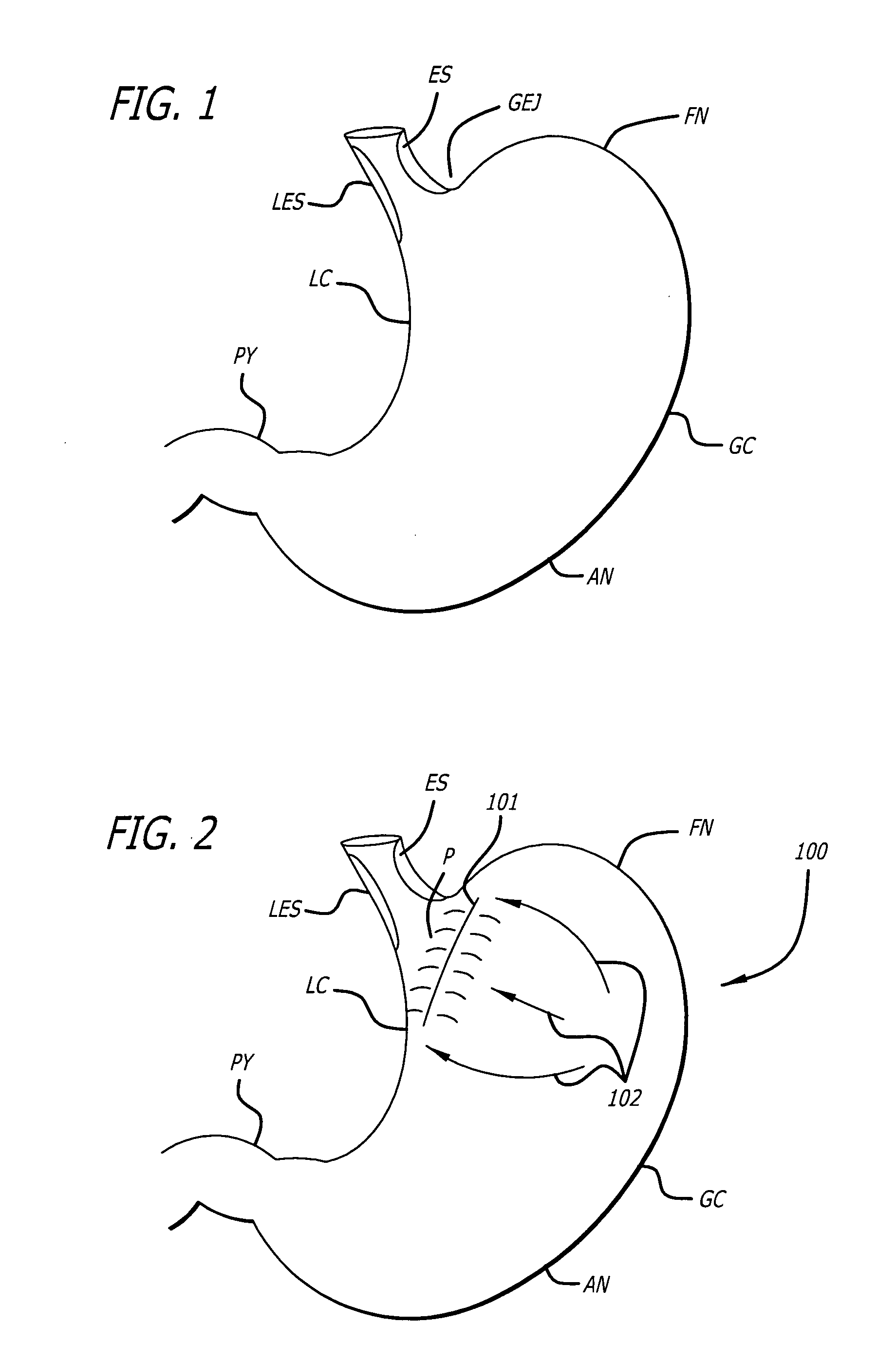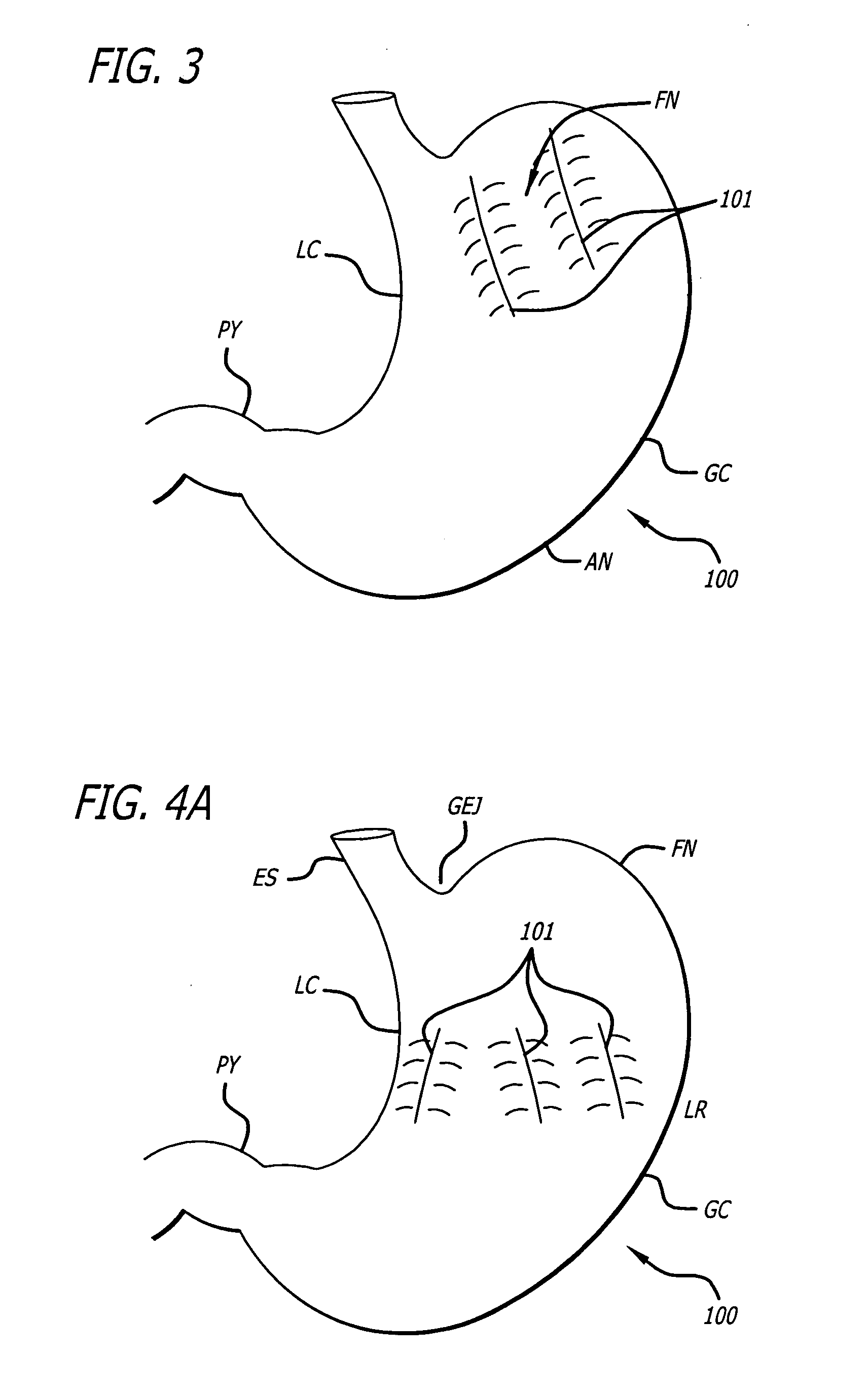Method and devices for modifying the function of a body organ
a technology for modifying the function of the body organ, applied in the field of medical equipment and methods, can solve the problems of less efficient communication with the antrum and other stomach regions, reduced emptying rate, and less food intake and subsequent weight loss, so as to prevent shortening or unrolling of the les, minimize distension of the region, and stabilize the region
- Summary
- Abstract
- Description
- Claims
- Application Information
AI Technical Summary
Benefits of technology
Problems solved by technology
Method used
Image
Examples
Embodiment Construction
[0022]The present invention provides, in part, for methods and devices to manipulate, partition, divide or restrict a hollow organ and, more particularly, provides methods and devices to treat diseases, such as obesity and gastroesophageal reflux disease (GERD), that can be mediated by the gastrointestinal organs.
[0023]FIG. 1 depicts an external view of various anatomical locations related to the gastrointestinal tract, including the esophagus (ES), lower esophageal sphincter (LES), gastroesophageal junction (GEJ), lesser curve (LS) of the stomach, greater curve (GC) of the stomach, fundic region of the stomach or fundus (FN), antrum of the stomach (AN), and pylorus (PY).
[0024]FIG. 2 depicts an external view of a stomach organ 100 with an example of a partition or fastening line 101 placed in a location between the GEJ and the LC of the stomach 100. The partition 101 may be angled toward the LC relative to the GEJ to create a “pouch” (P) to achieve an overall reduction in volume of ...
PUM
 Login to View More
Login to View More Abstract
Description
Claims
Application Information
 Login to View More
Login to View More - R&D
- Intellectual Property
- Life Sciences
- Materials
- Tech Scout
- Unparalleled Data Quality
- Higher Quality Content
- 60% Fewer Hallucinations
Browse by: Latest US Patents, China's latest patents, Technical Efficacy Thesaurus, Application Domain, Technology Topic, Popular Technical Reports.
© 2025 PatSnap. All rights reserved.Legal|Privacy policy|Modern Slavery Act Transparency Statement|Sitemap|About US| Contact US: help@patsnap.com



